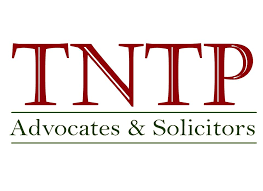The emergence of debts is a common occurrence in business activities in general and the construction industry in particular. Unattended debts can potentially pose a risk to a company’s cash flow. In this article, TNTP’s lawyers will provide insights into the tasks that businesses need to perform when incurring debts in the construction industry.
1. What is Debt?
Debt is the compilation of all the money that a business is owed by customers or partners, including money from the sale of goods, and products, revenue from providing services to customers but not yet received in full, advance payments, and overdue debts that need to be settled.
2. What Businesses Need to Do When Incurring Debt
a) Aggregating and Categorizing Debts
• After incurring debts, businesses need to aggregate them to ensure they can monitor all outstanding debts recovery, thus ensuring that no debts are forgotten. Subsequently, based on criteria such as the value of the debt, the time of debt occurrence, the financial capability of the debtor, and the importance of the debtor to the company’s operations, debts are categorized with varying degrees of priority for recovery.”
• Not all debts can be quickly recovered, and not all debtors are willing to repay. Therefore, categorizing debts helps businesses make decisions regarding necessary debt recovery measures. For example, for a newly incurred small debt, a business may only need to contact the debtor for a payment reminder. However, for a large debt that has been outstanding for several years, the business should consider filing a lawsuit with the relevant authority to protect its rights.
• Aggregating and categorizing debts should be the first task that a business undertakes when incurring debt. The value of this task is crucial and serves as a prerequisite for the business to take the necessary steps to recover the debt.
b) Requesting Debtors to Sign a Debt Reconciliation Agreement
• Debt reconciliation is the process of verifying a business’s debt amounts against the figures in its accounting books and the actual transaction data when companies execute contracts or transaction obligations. If the figures in the books and the actual data match, the parties executing the contract will confirm this in writing. A written confirmation of all debt amounts, signed and stamped by all parties, is known as a Debt Reconciliation Agreement.
• A complete Debt Reconciliation Agreement should have the acknowledgment of all parties involved, and this acknowledgment is to have the debtor accept the value of the debt. This allows the debt recovery process to be more effective as the business has evidence that the debtor acknowledged the debt value in the Debt Reconciliation Agreement.
• In a company’s accounting and financial management activities, the Debt Reconciliation Agreement is a document that helps the business assess its receivables, expenditures, and debts. Consistently confirming and reconciling debt also enables the business to evaluate its ability to repay debts and that of its other partners.
• In the debt recovery process, the Debt Reconciliation Agreement becomes even more valuable when a business has a strong basis to make payment requests based on the debtor’s precise acknowledgment during negotiations. Additionally, in cases where a business initiates legal action against a debtor, the Debt Reconciliation Agreement serves as crucial evidence for dispute resolution authorities to substantiate the business’s request for legal action.
With all these values, businesses need to promptly request debtors to confirm the Debt Reconciliation Agreement to ensure an effective debt recovery process.
The above are the opinions of TNTP’s lawyers on the topic: ” What to do when a debt arises in the construction industry?” Hopefully, this article provides value to its readers.
Best regard.







